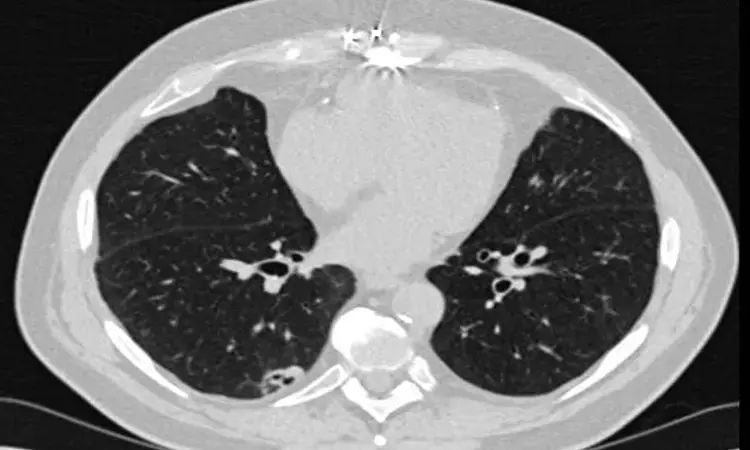- Home
- Medical news & Guidelines
- Anesthesiology
- Cardiology and CTVS
- Critical Care
- Dentistry
- Dermatology
- Diabetes and Endocrinology
- ENT
- Gastroenterology
- Medicine
- Nephrology
- Neurology
- Obstretics-Gynaecology
- Oncology
- Ophthalmology
- Orthopaedics
- Pediatrics-Neonatology
- Psychiatry
- Pulmonology
- Radiology
- Surgery
- Urology
- Laboratory Medicine
- Diet
- Nursing
- Paramedical
- Physiotherapy
- Health news
- Fact Check
- Bone Health Fact Check
- Brain Health Fact Check
- Cancer Related Fact Check
- Child Care Fact Check
- Dental and oral health fact check
- Diabetes and metabolic health fact check
- Diet and Nutrition Fact Check
- Eye and ENT Care Fact Check
- Fitness fact check
- Gut health fact check
- Heart health fact check
- Kidney health fact check
- Medical education fact check
- Men's health fact check
- Respiratory fact check
- Skin and hair care fact check
- Vaccine and Immunization fact check
- Women's health fact check
- AYUSH
- State News
- Andaman and Nicobar Islands
- Andhra Pradesh
- Arunachal Pradesh
- Assam
- Bihar
- Chandigarh
- Chattisgarh
- Dadra and Nagar Haveli
- Daman and Diu
- Delhi
- Goa
- Gujarat
- Haryana
- Himachal Pradesh
- Jammu & Kashmir
- Jharkhand
- Karnataka
- Kerala
- Ladakh
- Lakshadweep
- Madhya Pradesh
- Maharashtra
- Manipur
- Meghalaya
- Mizoram
- Nagaland
- Odisha
- Puducherry
- Punjab
- Rajasthan
- Sikkim
- Tamil Nadu
- Telangana
- Tripura
- Uttar Pradesh
- Uttrakhand
- West Bengal
- Medical Education
- Industry
Lung CT scans can also be used for identifying osteoporosis, finds study

China: Low-dose computed tomography (LDCT) imaging for lung cancer can also be used to identify patients with low bone mineral density (BMD), according to a recent study in the Journal of Bone and Mineral Research.
Early screening for lung cancer is performed using low‐dose chest CT is used for prevention of the disease. Previously, the researchers have shown the utility of LDCT for measuring trabecular vBMD of the lumbar spine with high precision. The aim of this population based study by Xiaoguang Cheng, Beijing Jishuitan Hospital, Beijing, China, and colleagues was to determine osteoporosis prevalence in China based on the analysis of lumbar spine vBMD derived from LDCT chest scans obtained for lung cancer screening.
In the study, 69,095 adults (40,733 men and 28,362 women) received LDCT scan for lung cancer screening between 2018 and 2019. The data was obtained from a prospective nationwide multicenter population study called China Biobank Project. Quantitative computed tomography (QCT) software and the American College of Radiology QCT diagnostic criteria for osteoporosis were used to derive lumbar spine (L1–L2) trabecular volumetric bone mineral density (vBMD) from these scans.
Key findings of the study include:
- The prevalence of osteoporosis by QCT for the Chinese population aged >50 years was 29.0% for women and 13.5% for men, equating to 49.0 million and 22.8 million, respectively.
- In women, this rate is comparable to estimates from dual‐energy X‐ray absorptiometry (DXA), but in men, the prevalence is double.
- Prevalence varied geographically across China, with higher rates in the southwest and lower rates in the northeast.
- Trabecular vBMD decreased with age in both men and women.
- Women had higher peak trabecular vBMD (185.4 mg/cm3) than men (176.6 mg/cm3) at age 30 to 34 years, but older women had lower trabecular vBMD (62.4 mg/cm3) than men (92.1 mg/cm3) at age 80 years.
"Our results show that LDCT‐based opportunistic screening could identify large numbers of patients with low lumbar vBMD, and that future cohort studies are now required to evaluate the clinical utility of such screening in terms of fracture prevention and supporting national health economic analyses," concluded the authors.
"Opportunistic Screening Using Low‐Dose CT and the Prevalence of Osteoporosis in China: A Nationwide, Multicenter Study," is published in the Journal of Bone and Mineral Research.
DOI: https://asbmr.onlinelibrary.wiley.com/doi/full/10.1002/jbmr.4187
Dr Kamal Kant Kohli-MBBS, DTCD- a chest specialist with more than 30 years of practice and a flair for writing clinical articles, Dr Kamal Kant Kohli joined Medical Dialogues as a Chief Editor of Medical News. Besides writing articles, as an editor, he proofreads and verifies all the medical content published on Medical Dialogues including those coming from journals, studies,medical conferences,guidelines etc. Email: drkohli@medicaldialogues.in. Contact no. 011-43720751


